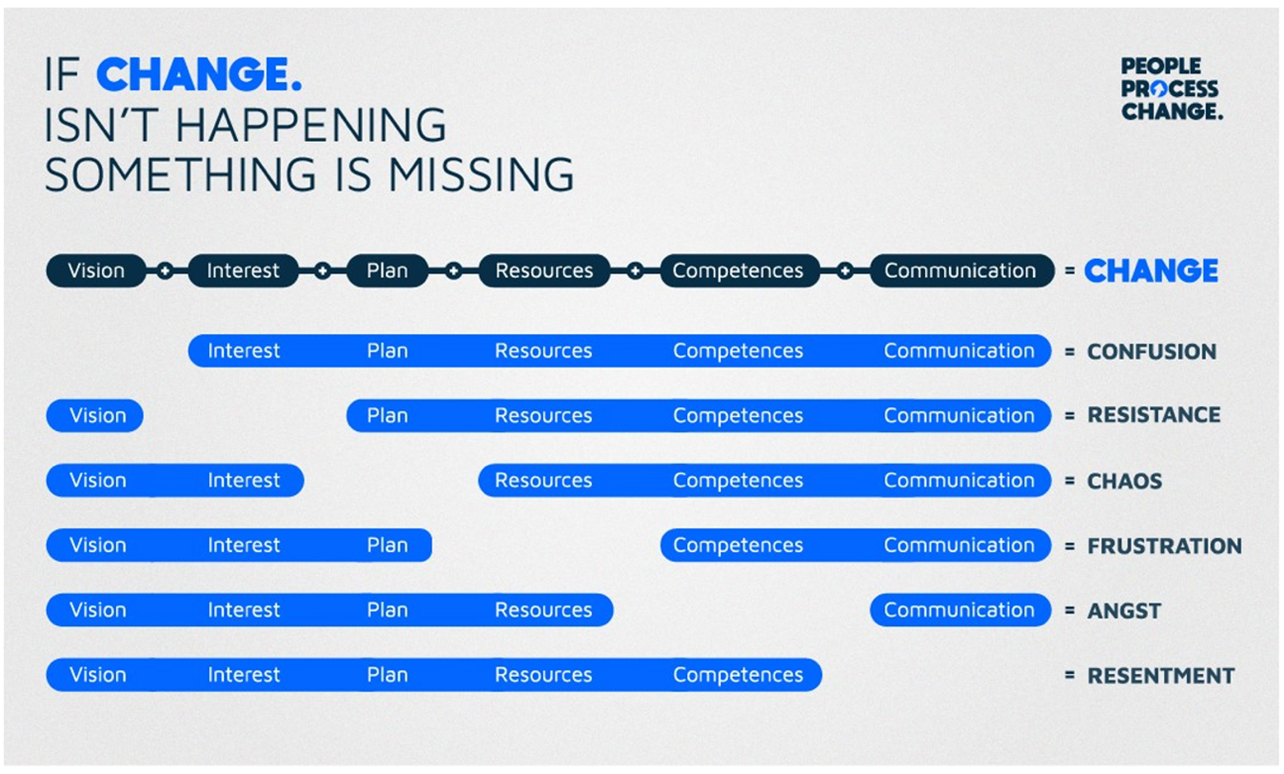cloud onboarding: preparing for change
Critical steps to iManage success
As you plan your iManage implementation, keep this in mind: Deploying our platform — the technology — is the easy part, relative to the people part. Many studies, some from the world’s top consulting companies, have shown that major technology deployments can fall short of delivering their expected outcomes because organizational change management was neglected.
The illustration below depicts the Lippitt-Knoster Model for Managing Complex Change. If any of its six areas are not addressed sufficiently, the organizational result at the right could potentially occur.

Training is not sufficient to ensure technology adoption
Because organization cultures can vary considerably, a change management program is needed to ensure your people will accept the transformative change that iManage can bring them. Employee resistance can slow adoption, utilization, and ultimately, your return on investment. That’s why you need to prepare your people for change if you haven’t started doing so already.
Your goal should be that when Launch time comes and your users are trained to change how they work, they will value their new tools and capabilities enough to adopt and use them confidently until they become second nature.
Training is important, to be sure, but it is not organization change management. After all, high rates of a technology’s adoption and utilization require not just the know-how that training provides but also the enthusiastic acceptance of the tools by users.
That’s when your organization’s ROI will really start kicking in. That’s when your users will start making knowledge work better for them as individuals and for the company, with better business outcomes.
A discipline necessary for organizational transformation
What is change management? We think one of the best definitions comes from Prosci, a consulting group founded in 1994 that focuses exclusively on helping clients put its research and best practices to work:
Done well, change management results in an aligned and sustained shift in organizational behaviors. In fact, Prosci’s research shows that projects using what it considers best practices in change management are six times more likely to achieve their goals than those with poor change management programs.
To get there, leaders of change initiatives within organizations, whether top executives or heads of major transformation projects, must plan carefully to communicate the reasons for change, who’s responsible, how it will affect workflows and individuals’ jobs, and what benefits and results are expected.
In our experience, an effective change management program to support technology adoption can be done in-house or with outside consultants. Either way, it’s as essential to success as the proper deployment of your iManage technology. And however it’s done, preparing your organization for change should include the following dimensions:
Preparing your organization for change
Ready to assist in your change management
Preparing for change via a disciplined change management approach is well worth the time and effort it takes to do it well by following best practices. As mentioned, doing so can increase the chances of reaching your goals of a successful iManage adoption and utilization by six times compared to doing change management poorly.
Your implementation partner and iManage Customer Success team stand ready to assist in your change management based on our knowledge and experience. Whether you decide to do it in-house or invest in a consultant, we will be there for you and for your users to ensure that their successful adoption of iManage is rapid and sustained.






